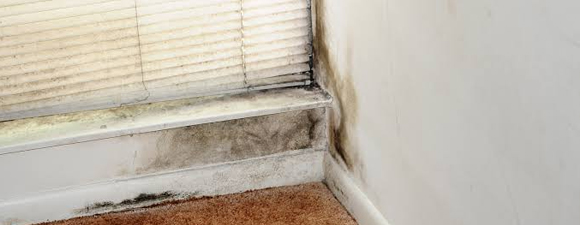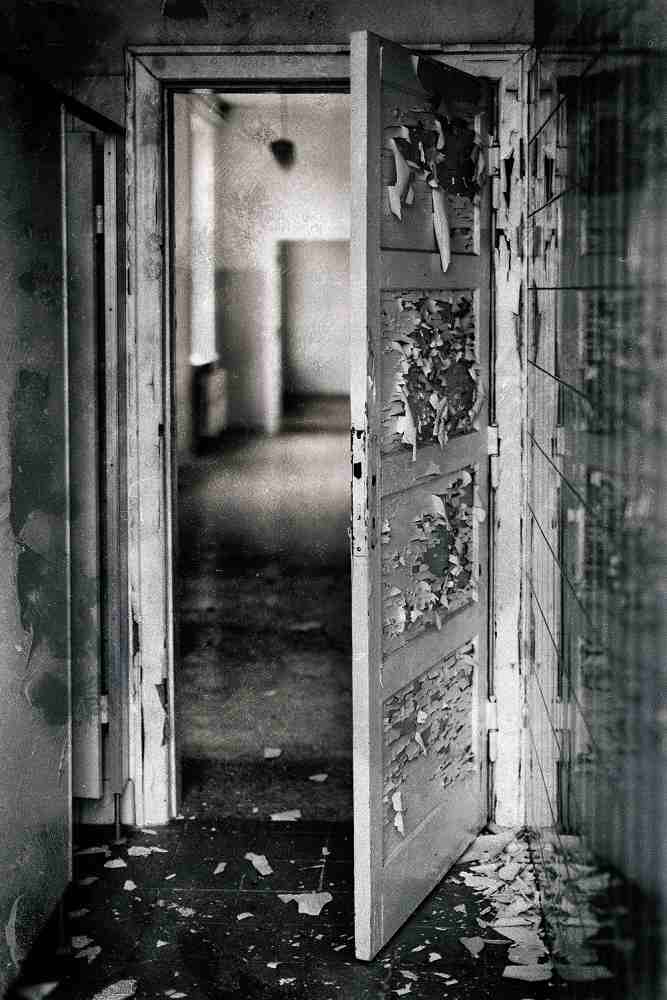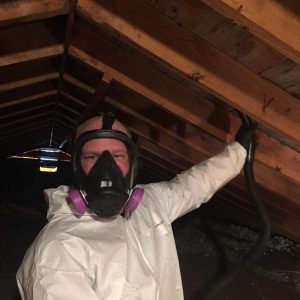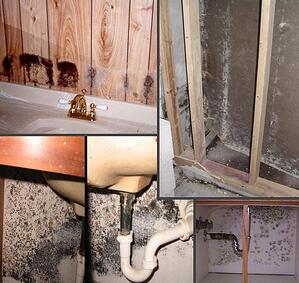Mold Remediation Certifications
Program Summary:
The Council-certified Microbial Remediator (CMR) and the Council-certified Microbial Remediation Supervisor (CMRS) conduct mold remediation and mold removal projects in the indoor environment. Individuals holding these mold remediation certifications design and maintain effective containments. A CMR or CMRS controls pressure relationships during a project. A CMR or CMRS safely cleans, treats or removes structures and contents affected by microbial contamination. A CMR or CMRS designs remediation protocols or follow established protocols and industry standards.
A CMR or CMRS possesses verified knowledge of the mold remediation field. The certification exams cover the most respected reference texts in the industry. Candidates must know the important industry standards. They must be familiar with scientific principles governing mold remediation and the indoor environment. They must understand the most common practices and protocols used by remediators and contractors. They must be familiar with the equipment used in mold remediation. They must be aware of legal issues affecting their work.
A CMR or CMRS possesses verified experience in mold remediation and mold removal in one or more of the following settings:
Offices and commercial buildings
Industrial structures
Government facilities
Schools and public buildings
Healthcare facilities
Residential structures
To earn the Council-certified Microbial Remediator (CMR) or Council-certified Microbial Remediation Supervisor (CMRS) designations, candidates must:
Demonstrate verifiable field experience in microbial remediation
Pass a rigorous examination based on broad industry knowledge rather than a course curriculum
Earn the unanimous approval of the CMR or CMRS certification board
Re-certify every two years
Participate in 20 hours of professional development activities each year
Maintain the highest ethical standards
Accreditation:
The CMR and CMRS certifications are accredited by the Council for Engineering and Scientific Specialty Boards (CESB), a nationally recognized independent accreditation body. ACAC certifications are the ONLY designations in the indoor air quality field to earn CESB accreditation.

A Brief Guide to Mold Moisture & Your Home (EPA)
Why is mold growing in my home?
Molds are part of the natural environment. Outdoors, molds play a part in nature by breaking down dead organic matter such as fallen leaves and dead trees, but indoors, mold growth should be avoided. Molds reproduce by means of tiny spores; the spores are invisible to the naked eye and float through outdoor and indoor air. Mold may begin growing indoors when mold spores land on surfaces that are wet. There are many types of mold, and none of them will grow without water or moisture.
Can mold cause health problems?
Molds are usually not a problem indoors, unless mold spores land on a wet or damp spot and begin growing. Molds have the potential to cause health problems. Molds produce allergens (substances that can cause allergic reactions), irritants, and in some cases, potentially toxic substances (mycotoxins). Inhaling or touching mold or mold spores may cause allergic reactions in sensitive individuals.
Allergic responses include hay fever-type symptoms, such as sneezing, runny nose, red eyes, and skin rash (dermatitis). Allergic reactions to mold are common. They can be immediate or delayed. Molds can also cause asthma attacks in people with asthma who are allergic to mold. In addition, mold exposure can irritate the eyes, skin, nose, throat, and lungs of both mold-allergic and non-allergic people
Symptoms other than the allergic and irritant types are not commonly reported as a result of inhaling mold. Research on mold and health effects is ongoing. This brochure provides a brief overview; it does not describe all potential health effects related to mold exposure. For more detailed information consult a health professional. You may also wish to consult your state or local health department.
How do I get rid of mold?
It is impossible to get rid of all mold and mold spores indoors; some mold spores will be found floating through the air and in house dust. The mold spores will not grow if moisture is not present. Indoor mold growth can and should be prevented or controlled by controlling moisture indoors. If there is mold growth in your home, you must clean up the mold and fix the water problem. If you clean up the mold, but don’t fix the water problem, then, most likely, the mold problem will come back.

A Beginner’s Guide to Finding the Right Mold Remediation Company
Finding mold in your home can be a stressful experience for the entire family. Mold is a dangerous growth that is incredibly difficult and time-consuming to remove. Starting the process of getting rid of mold can be confusing. Let’s review what every beginner should know about mold removal and how to select the right mold remediation company.
Mold Is Dangerous
Mold is a dangerous fungus that can grow in any moist space. In many situations, mold forms after flooding or another type of standing water. One specific type of mold is black mold, the most toxic form that consistently causes problems. When mold is found, your home or business is unsafe to inhabit until all the damage has been removed. Left unresolved, mold can cause a wide variety of health issues–including breathing problems, vision issues, and skin irritations.
Mold Remediation Is a Process
At the first sign of mold, it’s critical to get rid of it. The easiest way to start the mold remediation process is to hire a company to help remove it. Professional companies will use all the tools in their arsenals to clean and sanitize the building. They will also use advanced technologies to locate and remove mold hidden behind walls and in tight spaces.
Once the mold has been located, a plan will be designed to meet the needs of the situation. It could involve removing carpets, drywall, and other surfaces that contain mold. Once the space has been cleaned, advanced HEPA vacuums and dryers will be used to remove any signs of moisture. Any remaining moisture can lead to a quick reinfection of mold. Once the damage has been removed, it’s possible to repair and replace the damaged surfaces.
Finding the Right Mold Remediation Company
Once you suspect that your home may be infected with mold, acting quickly is key to getting back to normal. Selecting a mold remediation company should provide a full-service solution to your problems. When you’re in search of a company
Mold Remediation Protocols Course
Mold Remediation Protocols continuing education course will teach you the recommended work practices that help ensure a successful large or small mold remediation project. In the absence of state or federal guidelines, it is up to the mold professional to decide which protocols to follow
PMII’s Mold Remediation Protocols course summarizes, compares and contrasts the procedures from both organizations, so that you can make an informed choice that best suits your business.
This 9-lesson course will help you gain an understanding of responsible work practices from both organizations that include:
Written contracts and project documentation
How limitations and conflicts can affect a project
Determining which party should correct moisture problems
When to engage an indoor environmental professional (IEP)
Personal protective equipment (PPE) and containment
Methods of communication with affected parties
The treatment of high value and unrestorable contents
The use of disinfectants and gaseous biocides
Recommended and required types of worker training
The steps in work area preparation and containment removal
The sequence of activities for HVAC remediation
Includes a Mold Remediation Specifications Report Template to define the scope of mold remediation work to be performed by a qualified mold remediation contractor.
As you complete each lesson, you will use interactive flash cards and take practice quizzes that will test and verify your knowledge simultaneously through instant online feedback. Your results are saved in the cloud so you can easily track your progress. When you finish the course and pass the final exam, you will possess the knowledge and skills needed to determine which set of protocols your mold remediation business will follow
What You Will Master:
Writing contracts and documenting projects
The role of an Indoor Environmental Professional (IEP)
Requirements for personal protective equipment (PPE) and containment
Treatment methods, area preparation and removal
And much more
Removal Procedures in Accordance with EPA’s Guidelines for Mold
Level I – 10 Square Feet or Less
REMOVAL – by an adult individual, in good health, and with no compromises to their immune system
MAX AREA – 10 square feet
PERSONAL PROTECTION – wear respiratory protection, such as N-95 disposable respirator. Wear gloves and eye protection.
OCCUPIED – the work area should be unoccupied. Removing people from spaces next to the work area is not necessary. However, infants and the elderly do need to be removed. Also, those with compromised immune systems.
DISPOSAL – remove contaminated materials from the building in a sealed trash bag and dispose of.
CLEANING – clean all surfaces in contaminated areas thoroughly with soap & water. Finally, dispose of all rags or sponges used. Also, the area is to be dry and visibly free of contamination and debris.
Level II – 10 to 30 Square Feet
REMOVAL – by a professional, certified remediation company
PERSONAL PROTECTION – wear respiratory protection, such as N-95 disposable respirator. Wear gloves and eye protection.
OCCUPIED – the work area should be unoccupied. Removing people from spaces next to the work area is not necessary. However, infants and the elderly do need to be removed. Also, those with compromised immune systems.
DISPOSAL – remove contaminated materials from the building in a sealed trash bag and dispose of.
CLEANING – Cover surfaces in work area with sheets of plastic and tape in place. Do this prior to any remediation process to prevent further contamination. Dust suppression methods, such as misting (not soaking) surface before remediation. Clean all small debris with the use of a specialty HEPA vacuum. Also, the area is to be dry and visibly free of contamination and debris.
Level III – 30 to 100 Square Feet
REMOVAL – by a professional, certified remediation company with experience and good reviews. Acknowledges and adheres to EPA guidelines for mold removal
PERSONAL PROTECTION – professional-grade half-face respirators with P100 particulate filters. Wear a hazmat suit, gloves, and eye protection.
OCCUPIED – the work area and surrounding areas should be unoccupied.
DISPOSAL – remove contaminated materials from the building in a sealed trash bag and dispose of.
CLEANING – Cover surfaces in work area with sheets of plastic and tape in place. Do this prior to any remediation process to prevent further contamination. Dust suppression methods, such as misting (not soaking) surface before remediation. Clean all small debris with a specialty HEPA vacuum. Clean all small debris with the use of a specialty HEPA vacuum. Also, the area is to be dry and visibly free of contamination and debris.
Level IV – 100+ Square Feet *EPA Compliance Required
REMOVAL – by a professional, certified remediation company with experience and good reviews. Project managed by an on-site supervisor who is certified and experienced in mold removal. Professionals who follow these EPA guidelines and IICRC standards.
PERSONAL PROTECTION – professional-grade full-face respirators with P100 particulate filters. Hazmat, disposable protective suits, covering the entire body including the head, shoes, and hands. Tape the ankle and wrist to prevent any skin exposure.
CONTAINMENT – containment Barrier built around the affected area. Complete isolation of the work area. Seal off any vents or openings. The containment barrier must be under negative pressure. The use of air scrubbers with professional-grade HEPA filtration for a minimum of 24 hours.
OCCUPIED – the work area and surrounding areas should be unoccupied for a minimum of 3 days to allow for thorough air cleaning.
DISPOSAL – remove contaminated materials from the building in a sealed trash bag and dispose of.
CLEANING – Cover surfaces in work area with sheets of plastic and tape in place. Do this prior to any remediation process to prevent further contamination. Dust suppression methods, such as misting (not soaking) surface before remediation. Clean all small debris with the use of a specialty HEPA vacuum. Also, the area is to be dry and visibly free of contamination and debris.


